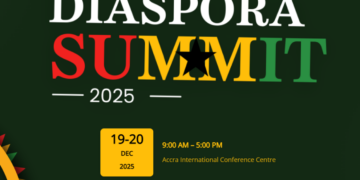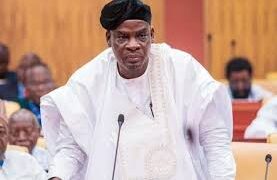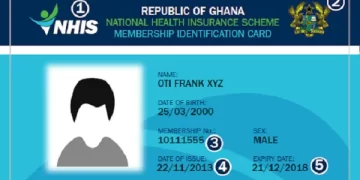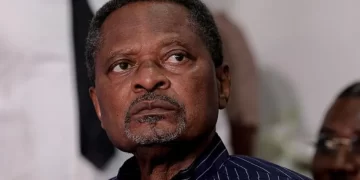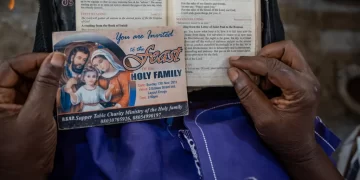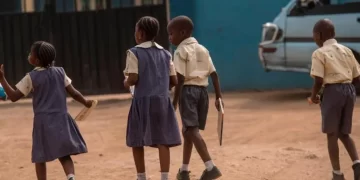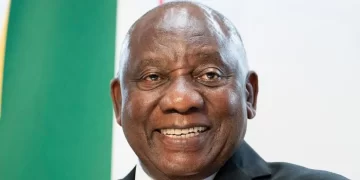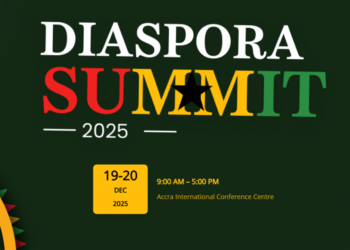YouTube began as a quirky video-sharing platform, but as it celebrates its 20th anniversary, its content has profoundly changed how we think, feel, and interact with one another.
In 2006, Time Magazine named its Person of the Year: you. The cover read, “Yes you. You control the Information Age. Welcome to your world,” featuring a mirror reflecting the reader’s image on a screen resembling YouTube. Just a year after its launch, YouTube had already reshaped our understanding of our roles in the evolving digital landscape.
Now, on its 20th anniversary, YouTube has evolved from a unique tool to a key component of technological infrastructure. Approximately 2.5 billion people access it monthly, and those who watch on TV alone consume a billion hours of video daily, not counting time spent on the app and website. Yet, YouTube’s influence extends beyond the internet into our everyday lives.
As journalist Mark Bergen notes in his book Like, Comment, Subscribe, “Not long ago, virtually no one took YouTube seriously.” However, it laid the groundwork for modern social media, influencing how attention, money, and ideologies function online.
YouTube videos have significantly shaped our collective awareness, influencing what unites us, what divides us, and what evokes laughter, tears, or discomfort. Bergen explains to the BBC that the platform’s financial model has driven the dynamics of social media, including attention and fame. Over the last two decades, human nature itself has transformed, with YouTube becoming a central point for how we perceive ourselves and each other, as illustrated by five notable videos.
Canon Rock: The dawn of online collaboration
Long before TikTok’s video stitching or Instagram Reels’ remixing became popular, there was “Canon Rock,” uploaded just ten months after YouTube was founded. South Korean musician Jeong-Hyun Lim, known as funtwo, performs in his bedroom with an electric guitar, his face concealed by a baseball cap and pixelated footage. Accompanied by a backing track of Johann Pachelbel’s Canon in D, Lim initially plays softly in harmony with the 300-year-old composition. However, about 40 seconds in, he transitions into an electrifying solo, his fingers swiftly navigating the fretboard.
The response was remarkable. As the video gained views, around 900 users submitted direct video responses, a significant feat at a time when uploading required a digital camera. Thousands more shared their own covers of the song. In 2007, YouTube user Impeto created a compilation of various “Canon Rock” videos, stitching them into one continuous track as if the entire internet was joining in. While skilled musicianship wasn’t new online, the level of user engagement was.
“Canon Rock” fostered a “reciprocity between artists,” enabling individuals to see each other as creative collaborators, according to Brooke Erin Duffy, a communication professor at Cornell University. By democratizing the creative process, YouTube became a melting pot for diverse communities with various interests and skills to shape the internet collectively. This laid the groundwork for a new era of online collaboration, as noted by Jean Burgess, a digital media professor at the Queensland University of Technology. Videos like funtwo’s were not merely performances; they served as invitations, showcasing skills and setting standards for others to aspire to.
Today’s video platforms are filled with marketing partnerships and heated political debates. In contrast, the musicians behind “Canon Rock” represent a simpler era, where collaboration was not driven by economic or ideological motives, but rather a space for online creators to recognize each other as part of a global community, embarking on a shared project together.
Lonelygirl15: What is Reality?
Early YouTube viewers are likely familiar with the story of Bree, better known as lonelygirl15. Her saga began with a homeschooled girl sharing simple videos about her everyday life. However, the plot took a strange turn when Bree uncovered her family’s ties to a peculiar religious cult. As weeks passed, the narrative became increasingly complex; Bree eventually went on the run, deciphering secret codes, evading cult followers, and battling a dark organization.
This was all fictional, of course. Yet, lonelygirl15’s ordinary beginnings led many not to question the story until the drama escalated beyond belief. “Bree” had an intriguing authenticity—she engaged with fans on MySpace and communicated with journalists, with even the New York Times pondering the series’ truthfulness until the final episode aired. It ignited heated discussions in online forums, where viewers dissected everything from her storyline to the quality of her videos.
“Authenticity doesn’t really exist online—you are always a persona, even when you’re not pretending to be one,” says Mark Bergen. “[Lonelygirl15] captivated many, pulling in those who might not have understood YouTube’s nature,” adds Duffy. “Her authenticity, relatability, vulnerability, and emotional sharing resonated with audiences.”
Beyond satire, the series cleverly employed social media tropes and norms to mislead viewers. It marked a significant shift on the internet, revealing how blurred the lines between reality and fiction had become, according to Duffy.
Lonelygirl15 transformed how many users interacted with one another, prompting some to reflect on their own online identities, Bergen notes. “In many ways, the lonelygirl15 series was ahead of its time,” he explains. “It cleverly highlighted the absence of true authenticity online—you are always presenting a persona, even if you’re not consciously acting.”
The series raised critical questions about discerning truth on the internet and helped establish a new environment where every post, regardless of how innocent, is subject to scrutiny and skepticism.
Coming out videos: Our authentic selves
In 2011, a young man sat in front of a world map, visibly nervous as he dialed his father on the phone. This man was Randy Phillips, an airman in the U.S. Air Force, recording himself as he came out as gay.
Phillips ran a YouTube channel called “AreYouSurprised,” where he shared his experiences under the “Don’t Ask, Don’t Tell” policy. In previous videos, he kept his face mostly hidden, but just hours after the 16-year policy was repealed, he revealed himself fully. Phillips wasn’t alone; his video was an early example of the “coming out” genre, which would grow increasingly influential over time.
“Watching real LGBTQ+ individuals share their coming out stories on platforms like YouTube has allowed queer and transgender people worldwide to realize they are not alone,” says Zach Eisenstein, director of communications at The Trevor Project, an LGBTQ+ advocacy organization. “When YouTube was just starting, I was a teenager figuring out my identity, and it helped me immensely as I navigated my own coming out journey.”
The offline world was also changing. It would take four more years for the U.S. Supreme Court to legalize same-sex marriage, but following a global economic recession that highlighted inequality and shifting political landscapes, social attitudes were becoming more accepting.
In 2011, Tyler Oakley, one of the first prominent openly gay figures on the platform, launched the “Coming Out” challenge, urging his audience and fellow creators to share their sexual orientations and experiences. YouTubers like Hannah Hart, Ingrid Nilsen, and singer Troye Sivan collectively amassed 2.8 million views on their coming out videos. Olympic diver Tom Daley also came out in a 2013 video, receiving widespread support from fans and fellow athletes.
“Creators resonate with viewers in a way that no other platform can match,” says Ben Relles, former head of comedy at YouTube and co-founder of the channel Barely Political. The way individuals present themselves varies among coworkers, family, friends, and strangers, but YouTube transcended these social boundaries. LGBTQ+ creators leveraged their relationships with audiences to emphasize that people with diverse sexual identities not only existed but were just like everyone else.
“Through both the positive and negative aspects of the internet, social media has given people a unique chance to find safe and welcoming online communities, especially when they feel unaccepted in their offline lives,” Eisenstein adds.
‘WHY I REALLY AM QUITTING SOCIAL MEDIA’: When enough is enough
“This is for my 12-year-old self,” begins Australian YouTuber Essena O’Neill in what she termed her final YouTube video in 2015. In the following 17 minutes, O’Neill explained her choice to quit all social media and passionately urged her followers to do the same. Her story critiqued the “contrived” nature of video and social media production and highlighted its detrimental effects on mental health, signaling emerging trends in the digital landscape.
“Running a channel is like being on a treadmill,” says Matt Koval, a filmmaker and former head creator liaison at YouTube. “If you stop or step off for an extended period, your viewers will likely move on and start watching others, making it hard to return.” Many creators, even from YouTube’s early days, never came back after stepping away.
In the past decade, videos about quitting social media have become a subgenre, featuring public figures who realize they’ve taken on too much or need a break. However, O’Neill’s exit sparked a wider conversation.
“People often underestimate the challenges faced by influencers and creators,” says Duffy. “What these creative workers experience reflects broader trends in the economy.”
Burnout was not limited to creators. Initially, social media was promoted as a utopian space for sharing ideas beyond traditional gatekeepers. However, discussions around its potentially addictive nature and negative impacts on time, attention, and mental health began to emerge.
Thanks in part to creators like O’Neill, who shared their experiences, conversations about our relationships with the internet began to evolve. A decade later, officials now describe social media as a significant public health crisis, yet this shift in awareness hasn’t deterred users from engaging online. Social media usage, especially on YouTube, is at an all-time high, and O’Neill has even returned to the platform.
ICYMT: South Carolina man to be executed in US by firing squad
A spokesperson for Google, YouTube’s parent company, stated that the platform strives to create a healthy and fulfilling environment for both creators and viewers. “Every YouTube creator has a unique definition of success, and we have support systems in place to help build a community that allows creators to thrive according to their individual needs and goals,” the spokesperson said. “We want creators to produce videos in a healthy, sustainable manner, prioritizing engaging content over the quantity of videos.” YouTube has also invested in initiatives promoting mental health among its users globally.
YouTube Rewind 2018: Why do we love to hate?
In the 2010s, YouTube experienced unprecedented growth, averaging one billion monthly users by 2013, according to the company. As YouTubers became more comfortable expressing their thoughts, some began to direct their critiques towards the platform itself.
For years, YouTube produced an annual recap video highlighting the year’s biggest cultural trends. What started as a brief, one-and-a-half-minute summary evolved into high-budget productions featuring an expanding lineup of popular creators and celebrities reenacting viral moments set to remixed hit songs. This approach was generally well-received until 2018.
In just one week, YouTube Rewind 2018 received over 10 million dislikes, making it the most-disliked video in the platform’s history. Critics, including the CEO of YouTube’s own daughter, condemned the video for promoting a self-serving narrative that prioritized corporate interests over genuine user experiences. “The community, once celebrated by YouTube, no longer feels included in the culture the platform seeks to promote,” wrote reporter Julia Alexander. The backlash was unprecedented in its speed and intensity.
“For a long time, YouTube has been fairly tolerant of its creators’ and audiences’ criticisms, creating an atmosphere where it’s acceptable for viewers to express their frustration with the company,” says Bergen. However, he adds, “the company has never been particularly good at gauging audience sentiment.”
Despite the backlash, YouTube asserts that it is an inclusive platform designed to empower its community. “YouTube has not only democratized content but also opportunities,” a Google spokesperson states. “We have developed a comprehensive strategy to ensure that we remain a platform for high-quality video content.” This includes robust community guidelines that the company strives to enforce uniformly to combat harmful content and foster a healthy environment.
The negative reaction to Rewind 2018 highlighted a growing discontent within the online community. “There was a significant shift,” Duffy observes. In YouTube’s early days, discussions often focused on its promotion of a positive culture. The original slogan, “Broadcast Yourself,” reflected a collaborative spirit among creators and users. However, over time, an adversarial tone emerged, with many feeling that the YouTube they helped create had become overly dominant.
The most significant change was in how users perceived their roles on the platform; once they were creators of YouTube, but now they felt they were merely consumers.
SOURCE: BBC

